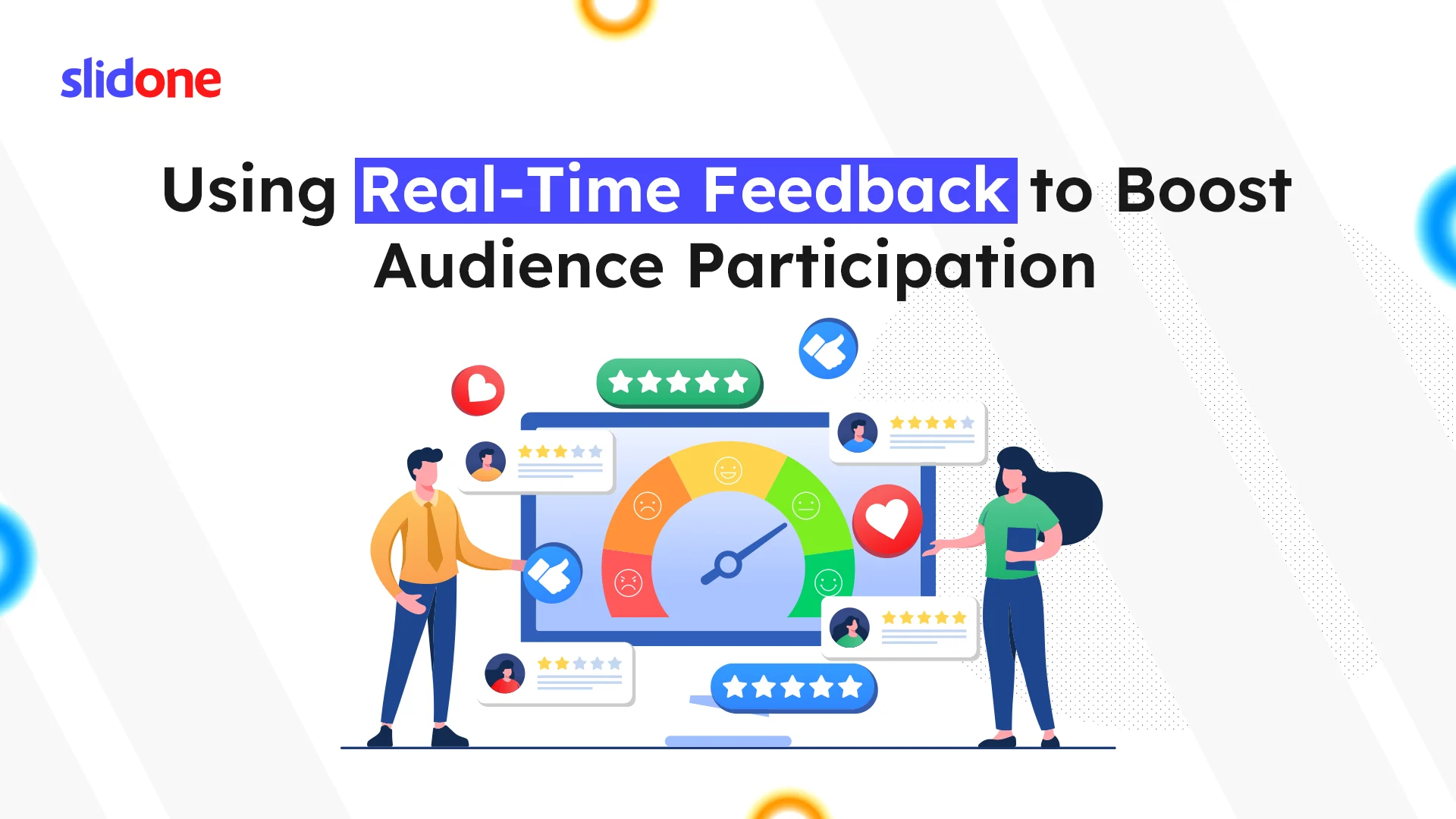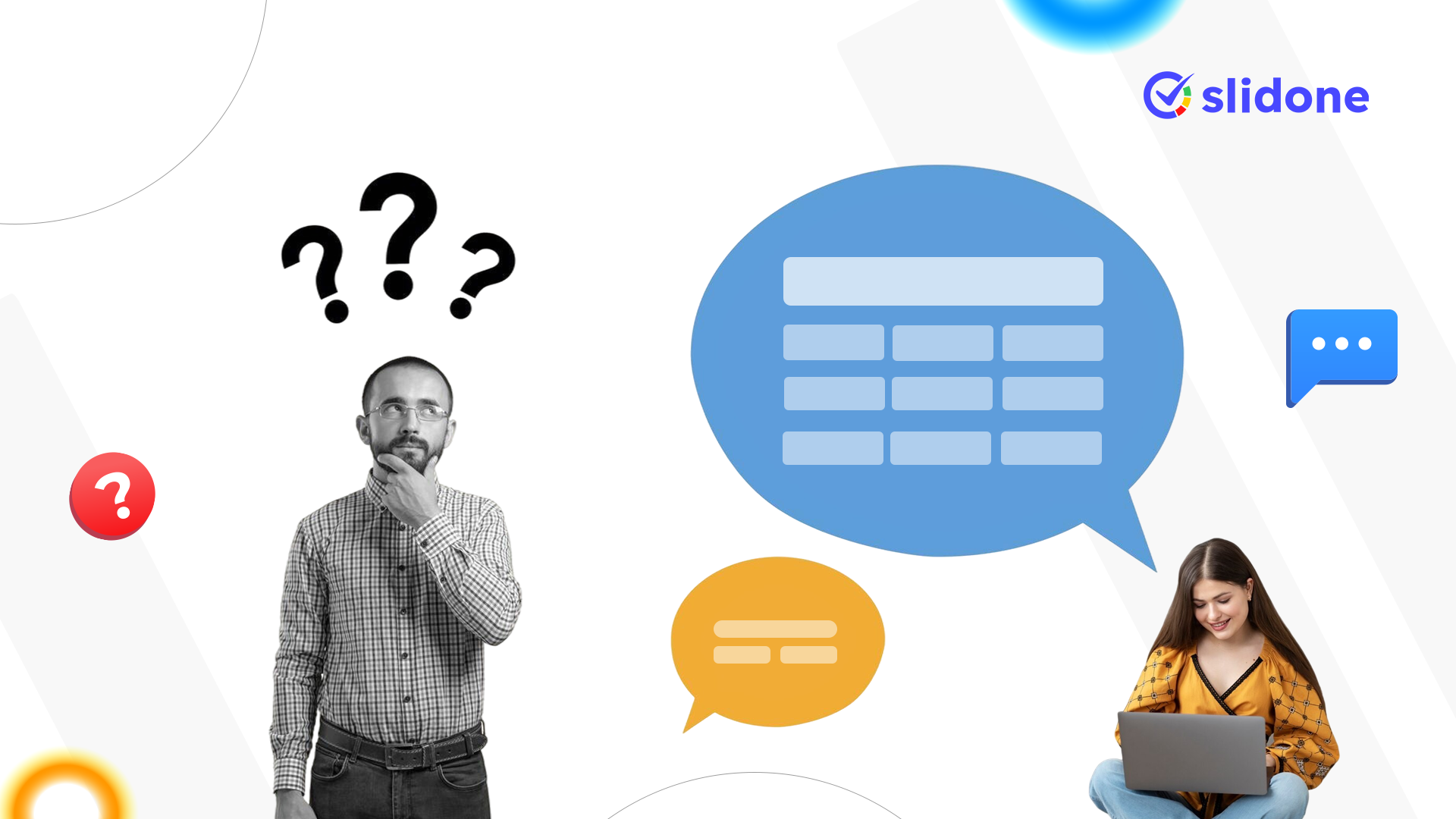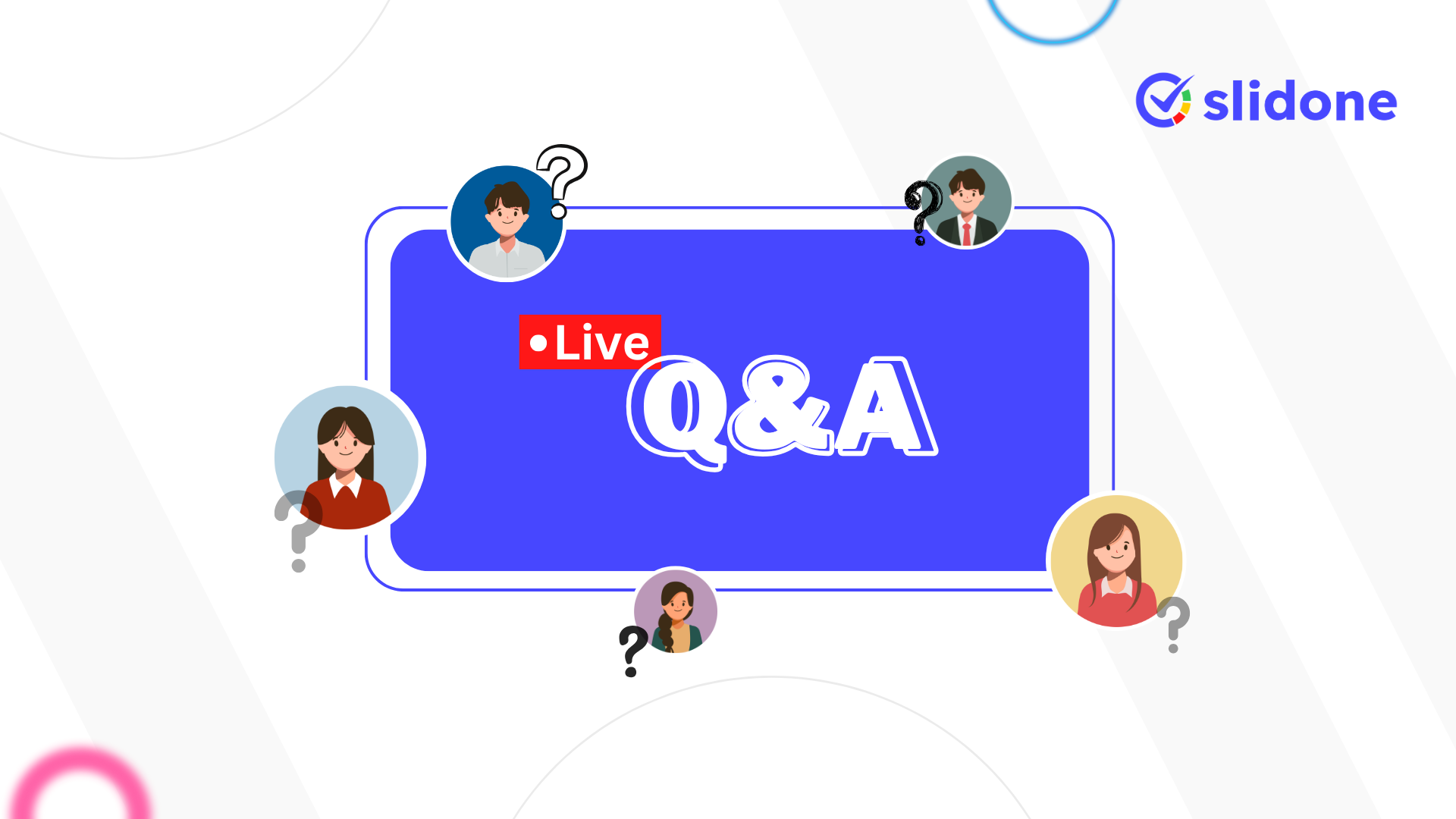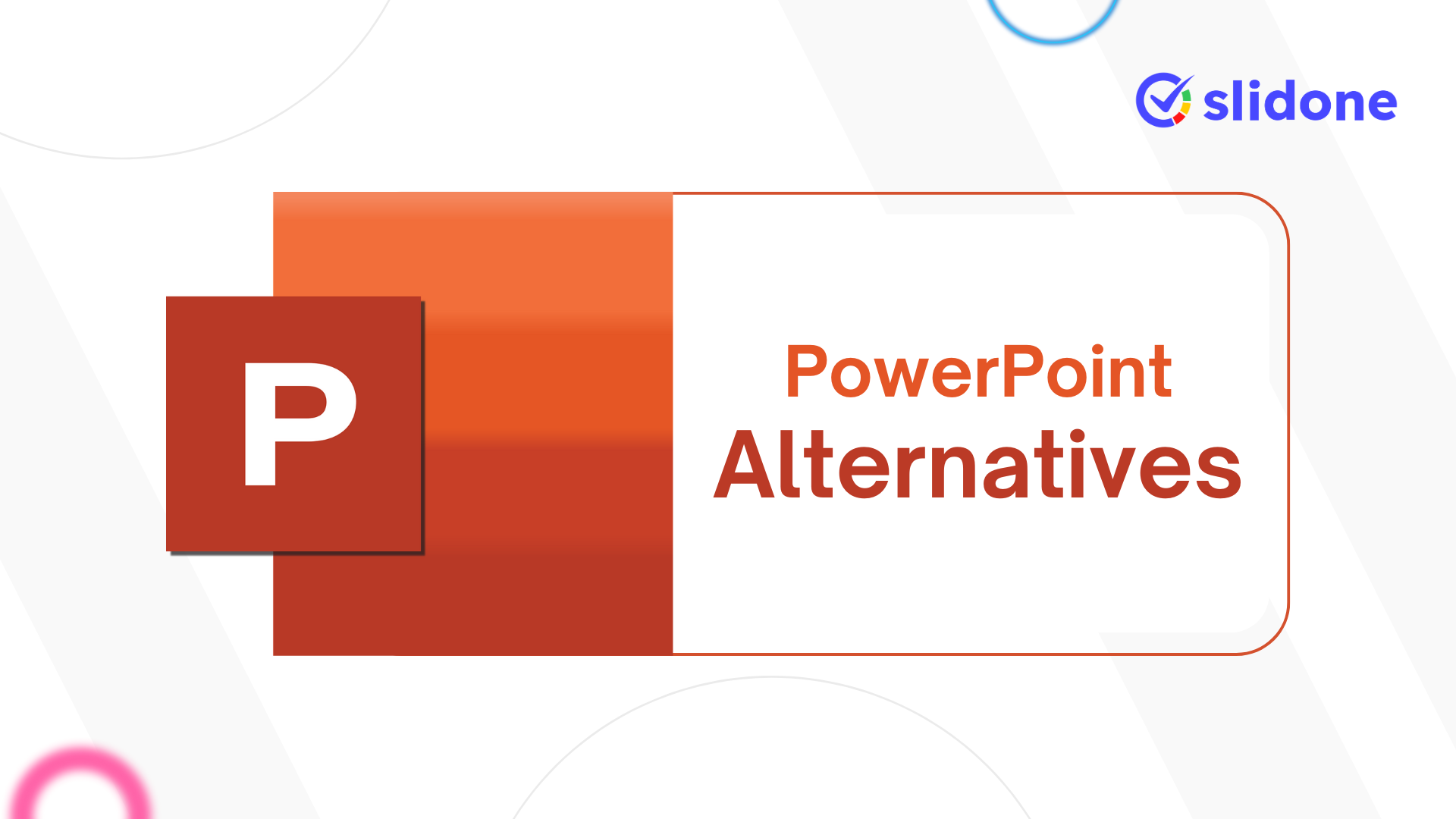Audience participation is the key to successful presentations. In academic institutions and professional circles, online feedback has proven to be a rich resource for enhancing such participation. With the help of presentation integration software, presenters can create an environment that invites continuous involvement, promotes understanding, and keeps the session lively.
It explores the power of real-time feedback and its benefits in this blog, but we also consider how interactive presentation tools are crucial in making this kind of feedback work well. So, let’s just get started.
Why Is Real-Time Feedback Important?
Real-time feedback lets the speakers know well their message is received right at that moment. You’re not going to wait until later to post the event to know what your audience thinks, feels, or understands. This allows you to improvise your presentation for their needs.
When you believe that the opinions and reactions of them matter to you, they will be more interested in staying engaged. It helps you also clear all confusion before moving on so that everyone leaves on the same page. There is nothing quite like real-time feedback to bring life to presentations; they become interactive, meaningful, and memorable.
Benefits of Real-Time Feedback for Audience Engagement
1. Increases Engagement
One might get an even more significant connection to the content in view when audience members are allowed to participate by giving instantaneous feedback. They will obviously interact more because they are not just listening passively but rather active participants in the discussion.
Example: While you are giving a product development presentation, in real time, take up the question, “What feature do you like most?” and this will make everyone participate, with interesting insights as you present.
2. Indicates Instant Corrections
Any wrong understanding from the audience in a lecture can be identified and corrected on an instant basis because it contains real-time feedback. If the audience appears confusing about the topic, then real-time feedback will let you know how to slow down or clear it.
Example: After a tricky explanation, ask “Is everybody clear on this?” And if you count several “no”s, you may rewrite or explain quickly.
3. Enhances a Two-Way Communication Channel
Feedback while presenting a lecture makes the one-way lecture a two-way conversation. The audience member feels listened to, and it can lead to bonding and trust with the speaker.
Example: Offer opportunities for questions during a training session. This promotes a dialogue, and you can focus your answers on the most frequently asked questions first.
4. Increments Retention and Understanding
Active responses from participants and reflection on the content increase the likelihood of retaining it. Real-time feedback aids in such reflection that ultimately increases overall comprehension.
Example: Take multiple quizzes to review material every few slides, so participants can get an idea of how well they are remembering stuff immediately and thus improve memory.
Effective Ways to Gather Real-Time Feedback
1. Utilize Live Polls
Real time live polls are an extremely easy way to seek the opinions of your audience. They are fast, easy to set up, and will give you instant feedback about the mood of your audience concerning a certain topic. You can use polls at the beginning of a session to understand the background of your audience or midway to check understanding.
Example: In a marketing strategy presentation, ask, “Which platform do you think brings the best engagement?” This gives insight and personalizes the discussion.
2. Incorporate Q&A Sessions
The inclusion of Q&A at intervals in the presentation brings more opportunities to interact. Rather than making it question time for the end of the presentation, create an opportunity for participants to raise them as they occur. You can give them immediate answers; this becomes exciting and keeps everyone to stay on topic.
Example: Open up a Q&A slide during the kickoff of a project. Ask team members to raise any concern or ideas they may have, then address these to be clear and aligned.
3. Have Real-Time Quizzes
Quizzes are engaging and entertaining ways to find out whether everyone understands. These work best in training rooms, classrooms, and even at business meetings. Quizzes urge everyone to pay attention and learn the material.
Example: After you introduce a key concept, create an exit ticket that reads something like, “What’s the big idea from this page?” Instant responses will show you whether more support is needed.
4. Word Clouds for Ideas and Brainstorming
Word clouds help in collecting ideas and opinions through the visually rich means of expressing oneself. Single words or a short phrase can be contributed by participants, and the most frequently used terms appear larger in a resultant collective image.
Example: When the brainstorming session is just beginning, ask, “What would you say when you think of innovation?” Display the word cloud and use this to get the brainstorming going.
Using Interactive Presentation Tools for Real-Time Feedback
Interactive presentation tools and software have revolutionized how we solicit real-time feedback. Let’s see some ways these tools facilitate interactive presentations.
1. Real-Time Integration of Live Feedback
Many presentation software tools have in-built features of live polls, quizzes, and Q&A. The flow remains good and professional with no switch between applications necessary in gathering feedback.
Example: A teacher can create in-presentation quiz questions using software and show the instant result right away. The teacher will be able to know if the lesson is clear or needs more explanation.
2. User-Friendly Customization
With interactive software, you can very easily customize the look and feel of feedback tools to match your own presentation style. You may choose different types of questions, switch to other themes, or maybe even set up specific answer options matching the topic and your audience.
For instance, on a business meeting topic, you may create a poll that reflects your company’s brand colors and then adjusts the layout to match the theme of the total presentation. It keeps the aesthetic consistent while gathering insights.
3. Ability to Engage with Gadgets to Access Data Easily
Using devices like smartphones and tablets, attendees can give their response tools directly from their phones or tablets, creating an all-inclusive atmosphere both in the hybrid and virtual audiences in a room.
Example: while attending a hybrid conference, people can use their phones to take part in live polls or Q&A sessions, making the experience of virtual and in-room participants seem the same.
4. Analytics and Data Collection
After the presentation, data collected from the polls, quizzes, and Q&A can be viewed through interactive software. This is useful for spotting trends, understanding audience preferences, and refining future presentations.
Example: The leader of a sales team may view poll data from a recent presentation so as to know what feature of a product the customers are most interested in. This refines future pitches.
How to Use Real-Time Feedback in Different Settings?
1. In Classrooms
Education benefits from this type of feedback as it uses real-time feedback for active learning. The teacher can apply polls to know whether the students have understood a certain topic, and quizzes help reinforce concepts. When the teacher gives immediate responses to the needs of the students, he or she, therefore, creates a safe learning environment.
Example: After teaching a new concept, a math teacher can use a quiz to check if the students understand. He will get immediate feedback of whether he should continue or move on to the next step.
2. Business meetings
Real-time feedback is also incorporated in business meetings; through them, engagements are sustained and puts into order the harmonies in team work. With polls, things are decided pretty fast. Through Q&A slides, employees can air their opinions or questions.
Example: Ask the team members attending your product launch meeting, “Are you comfortable with this launch strategy?” Use those results to quash doubts or gather ideas on how you might do better next time.
3. Webinars
Any webinar would greatly benefit from real time feedback because the webinar audience is necessarily dispersed across locations. Quizzes and polls make the experience feel more interactive despite taking place on virtual displays.
Example: Ask an open question, such as the following in a real-time poll: which of the following are you experienced with? Thus, you will know whether your target audience holds any experience regarding the subject and can, therefore, vary your presentation.
How to Present Effective Real-Time Feedback?
1. Use Simple and All-Inclusive Questions
Your respondents will answer more questions that are simple and easy to follow. Avoid using too much jargon or questions that are too complicated. This will confuse your respondents.
2. Mix Up Different Forms of Questions
It engages the audience by using different types of questions. Such as polls, word clouds, or open-ended questions. This different variation of engagement makes the experience lively and caters to each personal preference.
3. Address Real Time Feedback
Acknowledge the feedback received in the presentation. When participants feel valued, they are more likely to participate and engage.
4. Follow up after the presentation
Analyze the results you garnered and incorporate this knowledge in future sessions so you can make future sessions even more engaging and effective.
Making the Most of Presentation Integration Software
Presentation integration software makes real-time feedback very smooth and effective. Live feedback integration, custom layouts, data analytics-all these features make these tools incorporate all you need for an interactive experience.
Using such software, you would easily be able to include polls, quizzes, word clouds, and other similar material into your slides, keeping your presentation organized and focused. The analytics by the software can also give you an idea of how engagement behaves at different levels and when over time to hone your content further.
Conclusion
Real-time feedback is the game-changer when creating interactive, interesting presentations. Using all of the above tools such as live polls, Q&A, quizzes, and word clouds, it is easy enough to create an environment that will make your audience feel valued, drawn in, and motivated to participate.
Whether it is a classroom, meeting room, or online webinar, this interactive presentation tool and software allows you to maximize the live feedback. In addition to enhancing engagement, such software provides you valuable insights that can help refine your presentation skills over time.
Therefore, take with you the power of real-time feedback for your next presentation: to connect with your audience, adjust things on the go, and always remember a lasting impact.





Leave a Comment
Your email address will not be published. Required fields are marked *